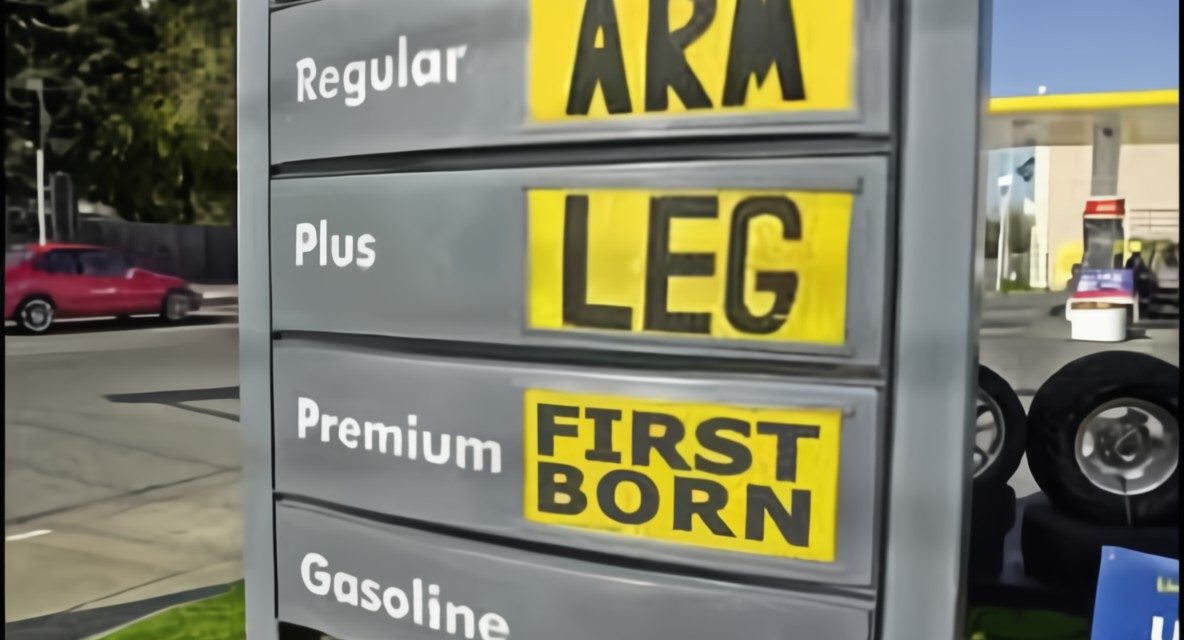Few regions are as vulnerable to higher gas prices than ours.
The Memphis region’s economy has always been overly dependent on industries with large carbon footprints – FedEx jets and delivery vehicles, Amazon distribution centers and delivery vehicles, trucking companies, and companies related to our overdependence on logistics companies
The good news is that FedEx and Amazon are researching ways to reduce their footprints. The strategies they are considering and experimenting with are of course aimed at ways of controlling and reducing their costs, but the strategies also would reduce Memphis’ footprint.
Meanwhile, drivers in the average household in the Memphis area will continue to pay more for gas because of sprawl and poor public transit which means they have to drive longer distances to work, to shop, and to attend social activities.
Even before fuel prices rose, Memphians were already spending 24% of their incomes on transportation costs. It is one of the highest percentages in the U.S.
The Price for Sprawl
In a ranking of the 52 largest metro areas in the U.S., Memphis is #9 in the most miles driven on average per person per day.
Only Kansas City, Atlanta, Charlotte, Dallas, Jacksonville, Nashville, Orlando, and Oklahoma City are higher, and along with Memphis, they are the only regions averaging more than 50 miles a day. The increased costs for more compact areas like Boston, Portland, and Providence are half of what they are for the Memphis MSA.
The disparity results in vulnerability for regions like ours, according to Portland economist Joe Cortright. “The differences are significant,” he wrote. “The households living in metros where people drive 50 miles per person per day are conservatively buying twice as much fuel as those living in metros where people drive only 25 miles per day.
“So while a family in a compact metro area would be buying, say, 100 gallons or so of fuel a month, its counterpart in a sprawling metro would be buying 200 gallons. So a $1 increase in the price of gas would hit about $1,200 harder over the course of a year in a sprawling metro than in a compact one.
“This isn’t just about individual choices and behavior: whole communities can be more or less vulnerable to gas price shocks, depending on how much land use patterns effectively necessitate driving. Communities where people don’t have to drive as much, or drive as far, have a real economic advantage over more car-dependent places. That’s a consideration that ought to play a larger role in local, state, and national policies going forward.”
Turning Membership Into Action
All in all, this gas crisis gives bike advocates their “I told you so” moment and brings even more importance to mobility strategies that reduce our carbon footprint, address climate change, and make our land use patterns more rational.
By and large, while companies are exploring more energy-smart policies, local government needs to do more.
It’s not as if we don’t know what to do. Memphis Mayor Jim Strickland is a member of the Global Covenant of Mayors for Climate and Energy and also Climate Mayors. Both Mr. Strickland and Shelby County Mayor Lee Harris supported and endorsed the Memphis Area Climate Action Plan which was developed as part of the Memphis 3.0 Comprehensive Plan.
All of these memberships and reports are about one thing: demonstrating leadership on climate change through meaningful actions, but it’s a rare day when there is any mayoral mention of climate change or reducing our carbon footprint.
That’s not for lack of ideas. The 216-page Climate Action Plan in particular offers a detailed set of recommendations to reduce greenhouse gases and recommendations for energy sector priorities, transportation priorities, and waste sector priorities.
The report is full of data, extensive calculations for projected energy reductions, and what needs to be done to reach the reductions. Unfortunately, these are not integrated in a deep way into the budget process and the setting of priorities.
The Time for Action
Memphis has made smaller incremental steps such as a Complete Streets policy but dramatic actions like an electric fleet remain to be taken. A top priority should be a well-funded, well-functioning public transit system that can have profound impact on our region’s success in energy sustainability.
Following the negative impact of the pandemic on government revenues, local governments immediately set up processes to plan for future impacts. The same should be done for higher gas prices because there’s not a better time to consider how to reduce carbon dependency in he future.
Even when this gas problem passes, Memphis will still have a serious issue to address. It’s in the interest of every car owner in our community for local government to develop long-term strategies to reduce drive times, to make land use patterns more compact, and to reduce greenhouse gas emissions.
***
Join me at the Smart City Memphis Facebook page for daily articles, reports, and commentaries relevant to Memphis.





Sprawl has been a long-term issue for Memphis. Though most US cities suffer from sprawl, Memphis certainly has a strong racial/class background to its sprawl. In the 1970s, Germantown and Collierville were distance small towns, not integral parts of the metroplex like they are today. Racial integration is certainly a key factor in that change. The cost of driving to and from work, social engagements and shopping trips is large. Most people never add up how much it costs to operate their cars/SUVs, because there is little choice to driving an automobile. But there is even an additional cost: Lost TIme. Being behind the wheel is very unproductive for most people. If you are driving 50 miles per day, then you are probably losing an hour and half of work income or an hour and half of real leisure. That is not a small part of the costs of sprawl.